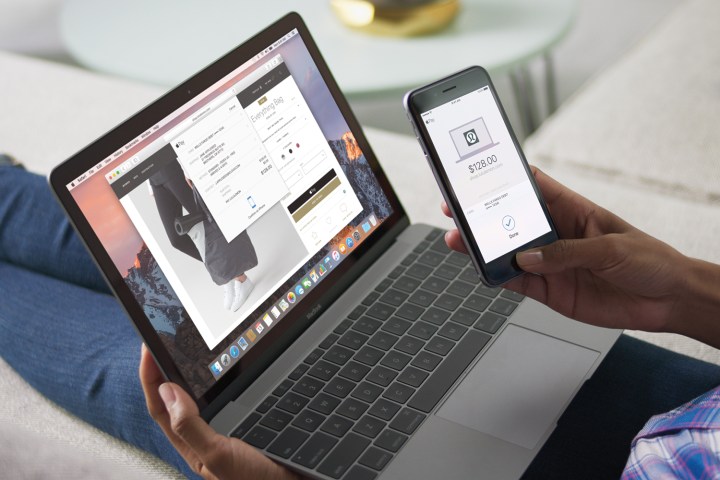
The Apple Pay launch coincides with the release of iOS 10 this week and macOS Sierra on September 20, and it’ll work much as it currently does within iPhone apps. On websites that support it, a “checkout with Apple Pay” button will appear as a payment option. Tap it and you’ll have the option of authorizing purchases with a fingerprint via Apple’s Touch ID feature. Transactions are protected with “strong encryption,” Apple said, and aren’t recorded by its retail partners. Every payment generates a randomized string of numbers, a so-called Device Account Number, that’s transmitted via a secure chip in Apple devices. “You no longer need to share credit or debit card numbers with an online merchant,” Apple said. “Actual card numbers are not stored on your device, nor on Apple servers.”
It’s not without issues. Apple Pay only works on Apple’s Safari browser right now, and completing checkout on a Mac requires that Bluetooth and Apple’s Continuity feature be enabled — you’ll need an iPhone, iPad, or Apple Watch signed into the same iCloud account as your Mac.
There’s no shortage of launch partners. Time, Inc. announced earlier this week that customers will be able to use Apple Pay to purchase subscriptions to its magazines including Sports Illustrated, Entertainment Weekly, People, and Real Simple. Furniture and home décor purveyor Wayfair announced support for Apple Pay in early September, as did payment processors Vantiv, Big Commerce, Squarespace, Stripe, Demandware, IBM, and Shopify. And at its Worldwide Developer Conference in June, Apple said that more than 70 partners — including Abercrombie & Fitch, British Airways, Burberry, Conde Nast, Fandango, Hollister, Hotels.com, JetBlue, Lululemon, Nike, Office Depot, Saks Fifth Avenue, Staples, Target, Expedia, Etsy, Travelocity, Under Armour, and United Airlines — would launch Apple Pay-compatible shopping carts this fall. Apple said that more than 200,000 websites would roll out support for Apple Pay on the web in the coming weeks.
Apple Pay is entering a well-established market. PayPal has more than 188 million registered users and processed 4.9 billion payments last year. And it’s not just incumbents which threaten Apple’s payments growth. Google, at its I/O developer conference in June, announced that Android Pay, its nascent payments platform, would launch as a payment option on websites including Groupon, 1-80o-Flowers, and “more” later this year.
Apple Pay has the advantage of momentum, though. Earlier this year, Apple said that Apple Pay has been adding 1 million new users per week. And in July, CEO Tim Cook said that more than three-fourths of contactless payments in the U.S. were made using Apple Pay.


